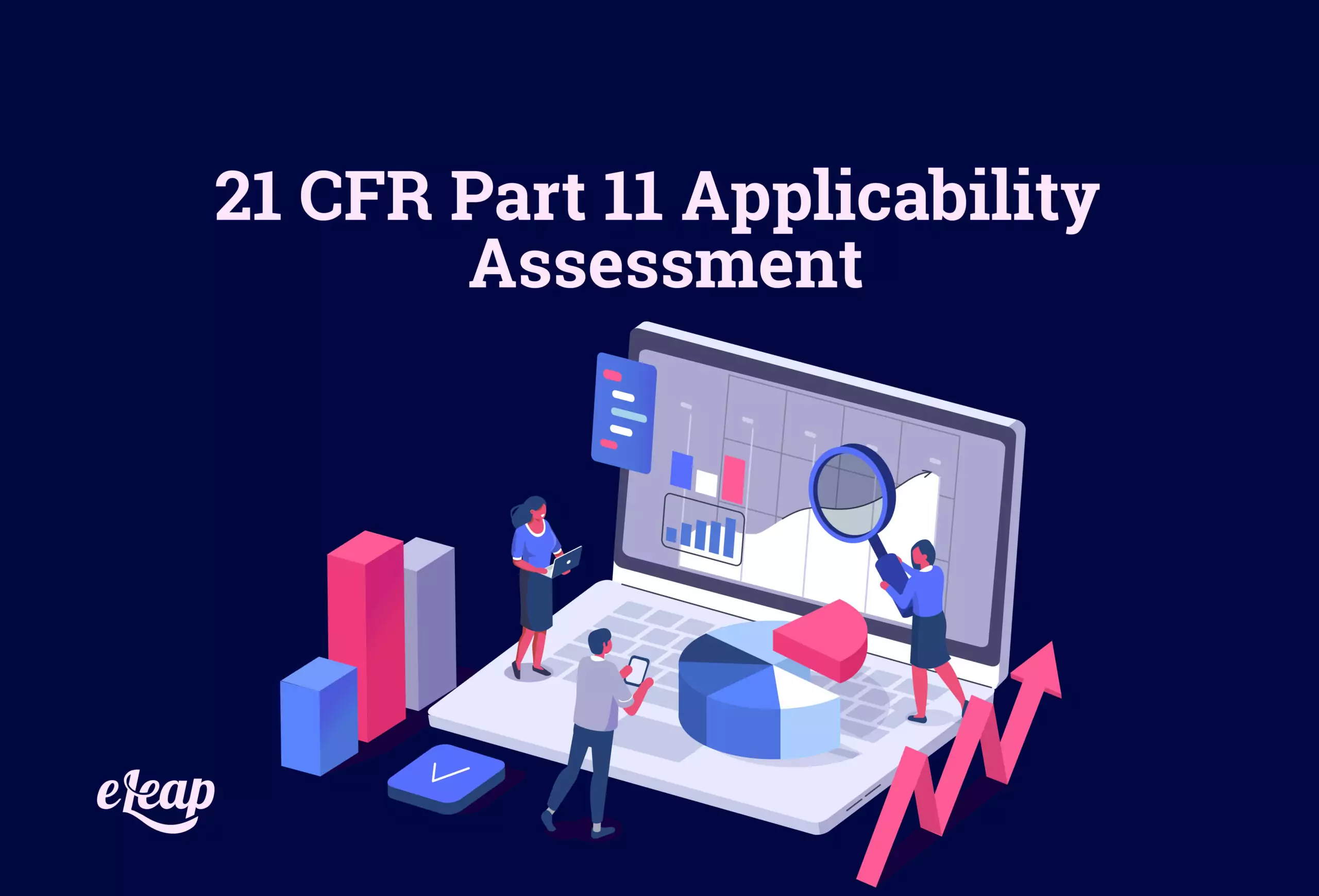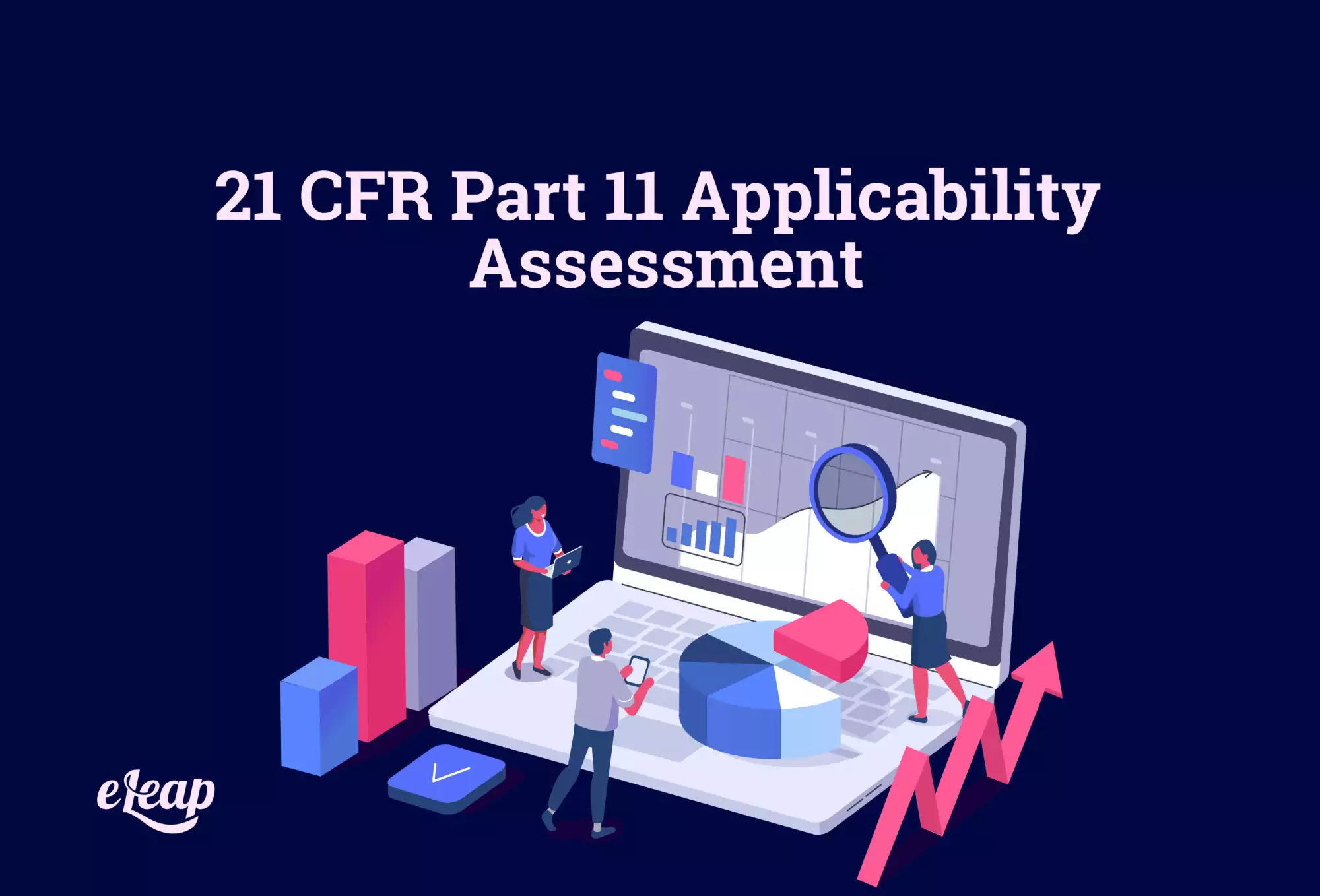21 CFR Part 11 Applicability Assessment
Title 21 CFR Part 11 Applicability Assessment Can Be Confusing

Title 21 is the code that sets forth the guidelines for data security and privacy. Part 11 compliance is the part that covers electronic records and signatures compliance for organizations within the life sciences community, among others.
The Title 21 CFR Part 11 applicability assessment can be used to help you determine whether this guideline holds relevance to your business. There are exceptions to every rule, and this case is no different. Understanding that is the first step. You cannot properly employ the practices of CFR Part 11 or even know if they’re applicable to your business without doing a little research.
By 2024, it’s expected that the SaaS industry for life sciences will see growth of $2.55 billion. Applicability is becoming more relevant than ever before. Nonetheless, organizations and vendors alike will still want to use the applicability assessment to determine whether this compliance should be on their agenda. Get a free sandbox account to see how eLeaP’s CFR Part 11 compliant system works.

Title 21 CFR Applicability Assessment
This assessment is simply the process of ensuring that all software tools and hardware solutions are compliant with CFR Part 11 in regard to electronic signatures and electronic record storage. People often struggle to figure out whether or not the rules and provisions of Title 21 CFR Part 11 even apply to their business or not. This statute is setting the regulatory compliance guidelines for several different electronic records and document-keeping processes.
Applicability simply means: “Does this rule pertain to my company/my records?”
There are some industries where Title 21 CFR Part 11 applicability comes standard. Life sciences, biotech, and medical device companies are at the top of the list, and in the UK, even pharmaceutical companies are held to a standard similar to the US’s Title 21 guideline, that is known as Annex 11.
Below, you will see some factors in the applicability assessment as it applies to all life sciences organizations and others subject to compliance with CFR Part 11.
Is it a true digital record?
CFR Part 11 applies only to digital records. That means that a digital copy of a hard document (such as an email attachment of a PDF that was scanned in from a physical document) is not subject to the compliance guidelines of this statute. One of the biggest elements of applicability for compliance is the validation of the electronic nature of the record or information.
There are several regulations in place that govern determining the applicability of this rule, including the definition of an electronic record: any combination of digital media that is stored, maintained, modified, or created within a computer system.
Who decides what qualifies?
The FDA is responsible for regulating and determining what qualifications are set forth in regard to electronic record storage and electronic signatures. According to CFR Part 11, if electronic records meet all outlined requirements, they are deemed to be acceptable alternatives to a paper or hard copy record.
The “outlined requirements” include:
- Infrastructure and system validation
- Data security standards for roles and access
- Audit trails with a record of who accessed the record, when it was accessed, and the purpose for access
- Single sign-on standards
- Two-factor authentication and/or the use of biometrics
- Hosting validation
There are several different hard copy records that do not qualify or that aren’t applicable under this law, and the regulations set forth will determine everything that you need to know.
What about the gray area?
The problem is that the 21 CFR Part 11 Applicability Assessment isn’t necessarily a cut-and-dry approach. There is a lot of gray area for the definitions and guidelines within this regulation. For one example, some companies automatically generate paper reports and have them printed and signed regularly, which many assume negates the need for compliance with this statute.
However, regardless of a paper trail, if there is any storage of electronic records or use of electronic signatures, the applicability assessment will generally determine that Title 21 CFR Part 11 does apply to your life sciences organization. The exceptions here are rare and generally related to age.
Some systems, such as ones that were in place before the original law in 1997 (rare) and those that generate paper printouts, do not have to meet compliance guidelines at the time of this writing. As the market for life sciences software and electronic access continues to grow, however, it’s likely that the compliance guidelines may also be modified to encompass more organizations and the record-keeping systems that they use.
Closed Systems
Closed systems are the ones that will be regulated by this guideline, for the most part. Open systems will have additional encryption methods in place to ensure that the system is protected from any potential threat that could come into play. Closed systems are required to provide:
- System validation
- Generation of readable records
- Ensuring record protection
- Limited system access
- Audit trails and operational system checks
- Authority checks
- Peripherals checks
- Training on the compliance necessary
- Prevention of falsification of records
- System documentation, including who has access and for what purpose at all times
This a guideline that outlines protocols and operational measures that are required by organizations dealing with any kind of electronic records. Therefore, it’s a matter of investigation to determine whether your records qualify for compliance under this rule.
Typically, any organization within the industries of life sciences, biotech, and pharmaceuticals will be required to comply with CFR Part 11 when they use electronic systems to store information or communicate with employees and/or vendors. This ensures that electronic records and signatures can be validated and authenticated and that they are given the same credibility as a handwritten signature or hard copy record.
When you work with eLeaP, the Title 21 CFR Part 11 Applicability Assessment is not something that you’ll have to worry about. Our LMS is designed to provide a compliant solution to assist your organization in streamlining your training and employee records and ensure that everything is up to code for organizations working within the life sciences industry.